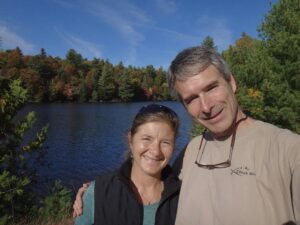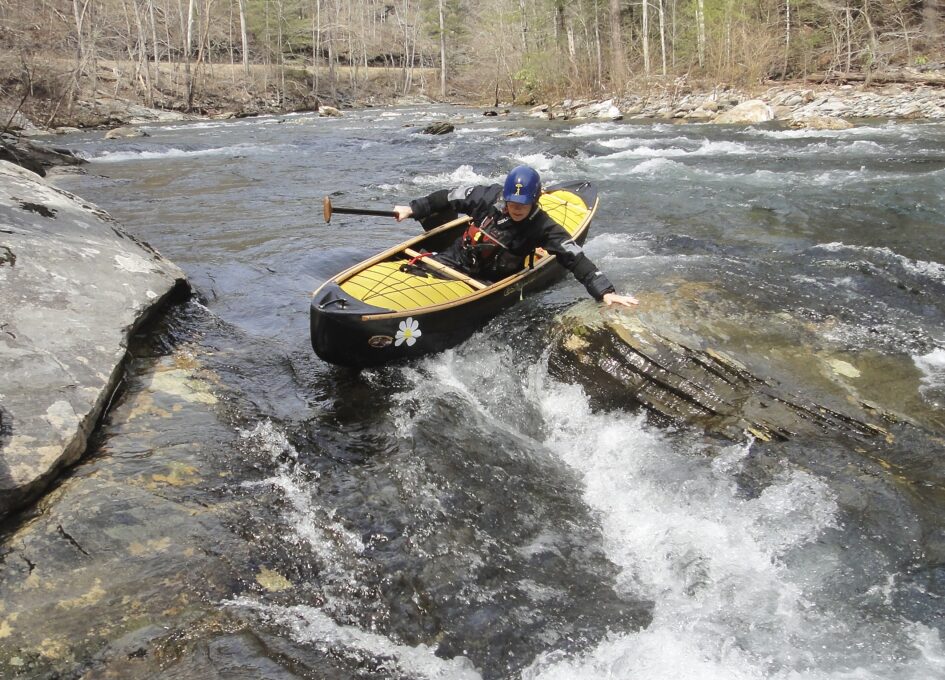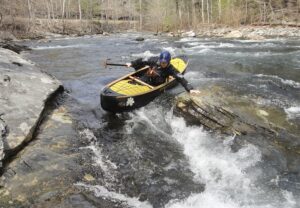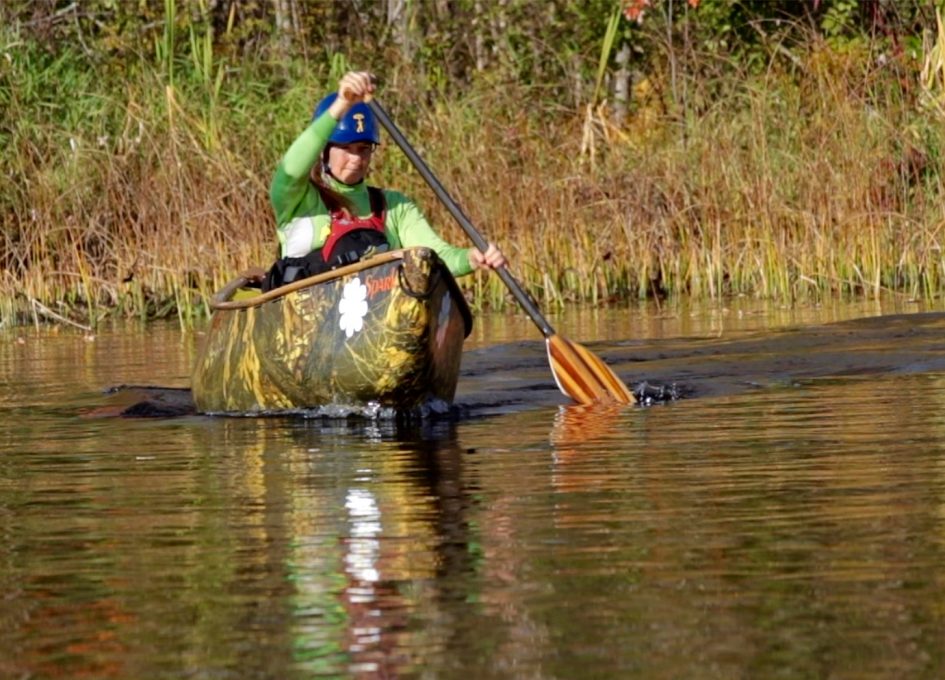Secrets of Great Paddling
How do you define an exceptional paddler? What makes them look so good? Do you think that you can do what they do?
Well, I think you can, and I’m going to share some of the secrets to becoming a really good canoeist.
And, some of these ideas may surprise you as they’re really easy to do.
Paddling Greats
First, watch video clips of some of your favorite canoeists. A few that I think look really outstanding are Bill Mason, Mark Scriver, Eli Helbert John Kazimierczyk, and also, my wife Carole Westwood. You’ll see something in common – a coordinated union of paddler, canoe and paddle. Everything just fits together. But, why does it look this way?
I think a great canoeist moves with a degree of grace that makes them appear to paddle with remarkable ease. In fact, at times they look to be moving very fast despite their relaxed pace. Second, their strokes appear smooth and in synch with the whole river environment. And finally, the canoe moves as if it’s an extension of the paddler themselves.
Invisible Skills that are Key to Greatness
- Hold your boat
This idea is so simple it’s often missed in our attempt to paddle well. Great paddlers actively hold on to their canoe via their feet, knees, legs, hips and back side (or sit upon, butt, etc.) using the outfitting in the boat.
Avoid at all costs just sitting like a passenger in your canoe – instead work to grip it, control it, guide it, but don’t just sit in it. Try to “push” your knees to the chine of the hull and keep them there, to actively hold the canoe.
Holding your canoe will make it stable. Watch out for side to side wobbles, and bow and stern bobbing. These are signs of a loose boat.
Gunnels should appear steady and nearly level when going straight, and held tilted throughout carves. The ends of the canoe should remain flat, not bouncing up and down.
The boat held securely will glide better when held flat, and carve better when held on a tilt.
- Paddle a quiet boat
Part literal, part metaphor, paddling a quiet boat is indeed quieter to the ear, but it is also “quieter” to the eye as well.
When a canoe is pushed too fast by your stroke, say during a turn or just to accelerate from rest, you will hear splashing from the paddle and gurgles from the hull. Forcing the canoe into a movement causes unnecessary splashes and aerated water. The aesthetics are visually harsh too. These sounds and visual clues also indicate a loss of energy.
Great paddlers temper their strokes to move the canoe in a way that matches the canoe’s natural rhythm on the water. Think of the story of the “Three Bears” as an analogy, paddle “not too fast, not too slow, paddle just right”.
Knowing how fast your canoe can accelerate or change direction, and not forcing it beyond its designed ability, will improve your efficiency and make you look in tune with your craft.
- Carve with Forward Strokes
Using the forward stroke to carve is easy. Consider that much of white-water paddling uses arcing paths. Because of this I avoid straight ahead paddling in favour of gently arcing when travelling in my solo canoe. But here’s the catch, while I’m on a carve I can steer by adjusting the speed of my forward stroke.
To straighten my route I speed up the forward stroke, likewise to tighten the arc, I slow my stroke down.
Avoiding friction strokes like the stern pry helps keep momentum constant; neither surging ahead, nor braking under the drag of a pry stroke.
Paddlers who use mostly forward strokes look smooth and effortless.
- Glide
It goes without saying, canoes are streamlined. So, take advantage of the canoe’s shape and glide more often.
I sometimes see paddlers using too many forward strokes as if they’re stroking to some unheard drum beat. Driving a canoe too hard causes it to veer off course. You can see this when paddlers use frequent correction strokes to bring it back on course. It’s called a correction stroke for a reason – hint hint.
Heighten your awareness of every stroke, place it precisely every time to suit the maneuver. Avoid hitting “autopilot” and just stroking for the heck of it.
Instead, feel the glide of the hull and add power precisely when you need it.
Be a Great Paddler
Incorporating the above ideas will help you become a great looking paddler. Using the canoe and paddle strategically will allow you too, to move in harmony. Just like other great canoeists
Check out our videos here.
Carole and Andrew Westwood
Paddle Canada Instructors / Instructor Trainers
Esquif Canoe Ambassadors
Contact: info@westwoodoutdoors.ca
For: Moving Water Instructional Courses
Custom Courses and Clinics
Personal Coaching










